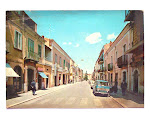-
Welcome to our blog, Menfranco general blog
and this post, lime use in buildings
-
Lime use in buildings
When mixing mortar, we not only use cement, but we use also lime, in fact in the old times lime was the main ingredient that was mixed with sand to make mortar. Of course there are other uses also, where lime is needed, as we are going to write about in this post.
-
Lime use
in buildings
Quick-Lime
and slacked or hydrated lime
Dear readers, in this post let us
talk about the, Lime use in building and other uses as well, just to show you
that lime is one of those things that is very useful and has been used a lot
more than we normally think, but let us see what we can write about it.
Today when we talk about lime we
see a bag of white powder that we buy at the hardware store, we know that we
can use this powder to replace some cement in some cases when we make mortar,
but we don’t seem to know much more than that, But lime is a lot more than just
a white powder in a bag, because lime is one of those materials that has been
and is being used a lot in many ways, its’ largest use is in making mortar for
the master builders, but it has many other uses also. So first of all let us
talk about lime and where it comes from, so that we would be able to understand
a few things about lime process and its several uses, of course here we are
mainly interested about its use in the building industry for making mortar etc.
But there is a lot more to say about lime, but before we do that let us check
out how the Wikipedia explains quick-lime etc. Where you can find a lot of
information about lime if you care to know all you need to do is click on the
links therein.
And then we will say something
about how in the old times quick-lime was turned into slacked lime for the
builders and other people to use.
----------------------
From the Wikipedia:
Calcium oxide (CaO),
commonly known as quicklime or burnt lime, is a
widely usedchemical compound. It is a white, caustic, alkaline crystalline solid at
room temperature. The broadly used term "lime"
connotes calcium-containing inorganic materials, which include carbonates,
oxides and hydroxides of calcium, silicon, magnesium, aluminium, and iron
predominate, such as limestone. By
contrast, "quicklime" specifically applies to a single chemical
compound.
Quicklime is relatively
inexpensive. Both it and a chemical derivative (calcium hydroxide) are
important commodity chemicals.
Calcium oxide is usually
made by the thermal decomposition of materials such aslimestone, that
contain calcium
carbonate (CaCO3;
mineral calcite) in a lime kiln. This is
accomplished by heating the material to above 825 °C (1,517 °F),[5] a process calledcalcination or lime-burning, to
liberate a molecule of carbon
dioxide (CO2);
leaving quicklime. The quicklime is not stable and, when cooled, will spontaneously react with
CO2 from the
air until, after enough time, it will be completely converted back to calcium
carbonate.
Annual worldwide production of
quicklime is around 283 million metric tons. China is by far the world's
largest producer, with a total of around 170 million metric tons per year. The
United States is the next largest, with around 20 million metric tons per year.[6]
----------------------------------
As we
have said above, lime has been used for a very long time its use could be
prehistoric, nobody seems to know when it was first used in making mortar and
plaster for buildings and also for other things, it was/is used even to
disinfect places when there is no much else to use, and I know that there is a
lot more to say about the use of lime even today; up to the time when I was
young it was used even to whitewash the walls in spring once a year, after a
long winter all the walls would be all darkened with smoke, since then if you
wanted to keep warm you needed to light a fire in the chimney, so some of the
smoke of the fire would find the way into the rooms instead of going all up the
chimney, I am pretty sure that even today this would be the cheapest way of
cleaning rustic building, as, it is one of the cheapest ways to make everything
clean. But let us start to tell you it several uses including as a building
material to make mortar when I was young, as it was done then and how I have
witnessed it done and in rare occasions helped to do it myself, just to bring
water to the pit.
--------------------------------
From
quick-lime to hydrated lime
From
quick-lime to slacked lime the old ways
Here we
are going to talk about the late forties and early fifties, when I was young
and learning what was happening around me, so, here under we will be writing
about what I saw and learned at that time about lime products and its uses.
In the
town where I come from in southern Italy; in the early fifties when there was a
new building to be build or some alterations to existing buildings to be done
one of the first things we would see was that the master builder would get
ready a good supply of slacked lime, because this was one of the most important
building materials he would need to do the job. In those times bagged hydrated
lime and cement was very expensive, and also bagged cement has a short life
shelving span, as it reacts when humidity infiltrate the bags, therefore most
people or builders that needed to build would use lime wherever they could;
they would buy quick lime and get it process immediately on delivery themselves
or with the help of the people that delivered it, of course one needs to know
how to do that, because there is some danger while you are doing it, so let us
see how it was done, and then we will also see where else the lime was used.
So; the
master builder would get ready to do this; if he had some large container or a
purpose made pit he could use them, otherwise he would build a square wall like
a box and in this large box he would process the quick-lime, now the quick lime
cannot be held the way it is for any length of time, because it reacts to
humidity and violently to water, so it is necessary that it is turned into
slacked lime as soon as possible after delivery.
Okay, the cart or the lorry is on the way, so
the master builder gets his worker to start filling the pit with water, and
when the quick lime arrives they start carefully throwing this burned lime
stones into the pit in very small quantities, as soon as the quick lime comes
in contact with the water it reacts and the water starts boiling, everybody is
banned to approach the pit accept the people that need to work there, and they
ware some protective gear, because it is dangerous to handle quick-lime and
around the pit, this process goes on until all the quick lime is thus treated,
once they have done that it is left to cool down for a few days; after it has
cooled down it is a lot less dangerous, but still you need to be careful near
the lime pit. You see the lime pit is now filled up with slacked lime, which
looks like curd when you make cheese, but it is still very dangerous and it can
easily kill you if you fall in it, its contend must be handled with caution,
but anyhow the slacked lime is now ready to be used, this is how the builders
used to get ready the lime to make mortar. Now to use this lime to make mortar
might be a bit different than using bagged hydrated lime or cement; so we will
come back to that soon enough, as now I would like to talk about some other
lime use first.
--------------------------------
Lime use
in farming
As we
have seen lime is a very useful commodity, in fact they are countless places
where we could use it, I only happen to know a few of them but there are a lot
more, so, let me just say a few things about how we were using lime in our small
family farm at the time when I was young, just the way I remember it:
We would
use it just like the builders use it when we had to repair or replace a few
stone that were falling apart in the old stone building, so, instead of using a
sort of clay that had been used the first time, we would mix a small quantity
of mortar using lime and sand, but that is what most of you would already know.
We used lime to whitewash the farm house, the stables, the pig stay, the
chicken coop and sheds or other buildings near the farm house once a year in
spring.
We would
use it sometimes to disinfect stagnant water ponds that showed signs of vermin
or the water were to dirty, so we would dilute some lime in water and then pour
it in the water ponds, and next day the ponds would be clean, as the lime would
kill the vermin and also would make the water clear because all the dirt would
sink to the bottom of the pond; you see in our small farm we used to have a
kitchen garden, so we would dig up a few ponds beside the garden that would
feel up with water during winter or when it rained, we used this water to water
the plants when the soil was becoming too dry for the garden plants to grow.
In the
farms of those days lime was also used to spray vines and trees, sometimes
there were diseases that could be controlled by applying a coat of lime to the
trunk of those trees; but there is one thing that always comes to my mind; it
is when we where spraying the grape vines with a copper sulphate and lime, we
would have two containers one with diluted copper sulphate and one with diluted
lime, some people used to spray first with copper sulphate and then with lime,
so that they somehow would help each other to kill the mildew, but my grandma
had worked a way how to avoid this double spraying and it worked thus;
In those
times it was not like today and even the vine spraying pump was a devise that
you would put on your back and with a handle that you would move up and down
you would spray your vines and trees as well; this devise would hold about
three gallons of liquid, so every now and then you needed to fill it up; so as
I have said we had two containers one holding diluted copper sulphate and one
with diluted lime; (of course you had to know how much diluted you had to do
your mixtures but that does not mutter here this time) anyhow when the pump
was/is empty you would go to these containers to fill it up: here is my grandma
way to avoid to spray twice, when filling the pump, first of all you had to
make sure than the mixture were well stirred, then you would put the copper
sulphate in the pump and at the last minute you would add the lime, and
immediately start to spray. This was my grandma way and it worked because the
mixture would not have time to settle down and become stale.
There you
are this is just another way of how lime is useful in the farms. And now we are
going to tell you how to make mortar with slacked lime.
How to
make mortar with slacked lime
This is
how I know it was done in the old time, perhaps for thousands of years, anyhow
let me just describe to you the procedure; We would like to do that so that
people that want to try how to do it yourself, could have a go and also in
those parts of the world where are far behind may come handy to know, since
lime being cheaper than cement and having a longer storage life once it has
been hydrated might be more convenient to use than cement. Now that we have
stated the purpose of this article, let describe how it was done.
Let us
suppose that you have the slacked lime in the pit or in a container; you also
have some brickies loams or very fine sand, so let us start:
First of
all make a hip of your sand on a platform and definitely not on loose soil; now
that you have done that, make a well in the centre and place your slacked lime
in it. The quantities in here may vary a lot more than when we use cement or
hydrated bagged lime, because the slacked lime can be as liquid as thickened
cream to as compact as feta cheese, so you have to learn as you go about the
quantities, but if you have mixed mortar before you soon work it out yourself,
or if there is any tradesman that is going to use the mortar he would be able
to tell you just by looking at the mortar being done, whether you need more
lime or more sand and water etc.
Okay, now
that you have the lime in the middle of the sand, with a Larry start pushing
this devise up and down through the lime by adding a bit of water as needed and
slowly mixing some sand with the lime; you need to do this until you have mixed
the whole lot evenly. This is hard work but that is how it was done when there
were no mixer and no bagged hydrated lime around.
Here we
need to note that this mixing of slacked lime to mix mortar is completely
different from mixing other mixture, because the slacked lime is already wet
and it is like a paste, and the others are dry powder, therefore it needs to be
used in a different way.
Anyhow
this is how I remember it was done. Now, I think that I might have said enough
about how to mix your own cement or mortar, and also this article has become
too long to continue, so see you next time with a different subject about any
sort of buildings or real estate.
-----------------------------------
This is:
Menfranco general blog,
Lime use in buildings
IS TO BE CONTINUED;
Next time with, something about buildings or real estate
-------------------------------------
Some personal and religious links:
Some personal and religious links:










No comments:
Post a Comment